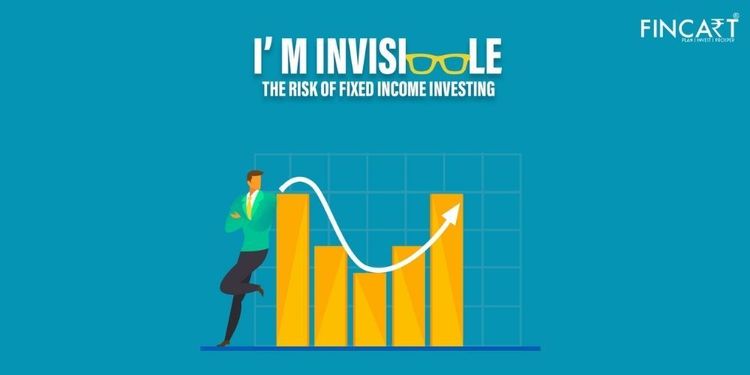Table of Contents
Toggle“The uncertainty of the investment and its returns” is considered a risk. To most people “the certainty of return on fixed income investments” is quite comforting and hence it is the most preferred choice of investment. Fixed Income when compared to equity is less volatile; when allocated with equity it cushions to reduce the overall investment volatility. However, to equate “the certainty of return” with “no risk” is fatal.
Corporate deposits have defaulted in the past as well; very recently a couple of banks passed through rough weather; few cooperative banks faced default holding the depositor’s money; but these incidents are sporadic and did not affect a very large pool of investors, and hence it did not leave a lasting impact. Boldly stated, prudent investors often seek professional investment advice through certified investment advisors to navigate potential pitfalls and uncertainties in the financial landscape.
Secondly, the perception that the government will not allow Public Sector Banks to default, is also partially responsible for the false sense of security.
Pre-tax vs. Post-tax returns
Before demystifying the risk of fixed-income investments, I would like to emphasize the importance of post-tax returns (actual return in hand after paying taxes) and not just comparing the pre-tax returns (returns before paying taxes). Most people in higher incomes because it is tax-efficient if held for 3 years or more.
FD vs. Bond Fund
Fixed Deposit of a bank or a Corporate Deposit is not a pass-through instrument, the investor gets only what is promised, and any upside of lending at higher rates or borrowing funds at lower rates remains with the bank. The Bond Fund on the other hand is a pass-through instrument where the risk & reward gets measured daily in the Net Asset Value (NAV) of units and is completely passed to the investor. The Fund Manager manages the Bond Fund for the asset management fee.
The risk of a Fixed Deposit and that of a Bond Fund are the same but the risk in the case of a Bond Fund appears blatant while that of a Fixed deposit remains camouflaged; to some extent opaque.
Will try to make a humble attempt to simplify the risk of fixed-income investing. The Bond Fund managers invest the money in Government Instruments (Government Bonds and Treasury Bills) and Corporate Fixed Income Instruments (Corporate Bonds/ Debentures, Commercial Papers, Certificates of Deposits).
Interest Rate Risk
If a bond is held until maturity then the Interest Rate Risk is zero (meaning the investor gets the principal invested along with the regular interest repayments). The risk sets in if the bond is either traded or has to be valued daily before it’s maturity. The Bond Fund has to factor in the daily price movement of the bond, which gets reflected in the daily NAV; hence the risk.
The intensity of the Interest Rate risk depends upon the duration of the bond, which is like a see-saw. The longer the duration of the bond, the higher the impact of Interest rate movement on bond prices.
The time to recovery of the impact is much faster in bonds with a shorter bond duration when compared to longer-duration bonds.
Credit Risk
The risk of default towards repayment of principal and timely repayment of interest. The chances of Government defaulting are very low hence treated as risk-free investment. The corporate risk is measured by their credit rating (denoted as AAA, AA+, AA, and it goes on until D which signifies default); the AAA credit rating signifies high creditworthiness.
Lower-rated corporate bonds offer higher interest rates (higher risk-premium for taking the higher credit risk). Bank Deposits ensure that an investor is guaranteed up to INR 5 Lacs of their deposit in case banks default.
Government Securities are actively traded while Corporate Bonds are sparingly traded; adding to daily NAV volatility. The traded price or the end-of-the-day price is considered to calculate the daily NAV of the Bond Fund. This gives rise to another risk – the Interest Rate Risk.
The re-investment risk(i.e.- the inability to invest the bond’s maturity or interest received at a higher or same rate during a falling interest rate regime) and Liquidity risk (i.e. – fund manager’s inability to liquidate or sell bonds when required because of low or negligible trading).
The Bond YTM trap
Fixed-income investors habitually associate guaranteed returns with fixed income whereas a Bond Fund does not offer assured returns and is subject to market risks. YTM has used a proxy to arrive at the assured return (i.e. – YTM minus the fund expenses is equal to the expected returns). This may sound simple but it may not hold.
What should investors do?
The Asset Allocation concept suggests optimum use of Debt and Equity based on Investor’s Risk Tolerance Level. The core idea of using fixed income is to add stability to the overall portfolio to reduce volatility/risk; and tactically use the fixed income opportunities by either adding higher Interest Rate Risk or Credit Risk.
The investor’s bulk of the fixed income investment (i.e.- Core Part of Debt Allocation) must be in low duration (with very low limited interest rate and negligible credit risk).
Tactically adding a higher duration Bond Fund to take advantage of favorable interest rate environment (i.e.- expected to go down in the future) make sense or simply relying on the more informed Dynamic Bond Fund Manager.
The interest rate risk loss is relatively easy to recoup but the credit default risk can be fatal eating away a few years of gain. Investors who understand credit risk must add this risk to their portfolio. Given the illiquid Indian Corporate bond market navigating the Credit risk may not be very easy.
Summing up
Fixed deposits / corporate deposits carry hidden risks (majorly tax & credit risk). Investors under lower tax brackets can invest in Bank FDs / Post Office Schemes. Investing in Bond Funds for three years offers tax-efficient returns. Invest the core part of the debt asset allocation in Low-Risk Debt Funds. Tactical Allocation to higher Duration Products / Credit Risk is advised.




